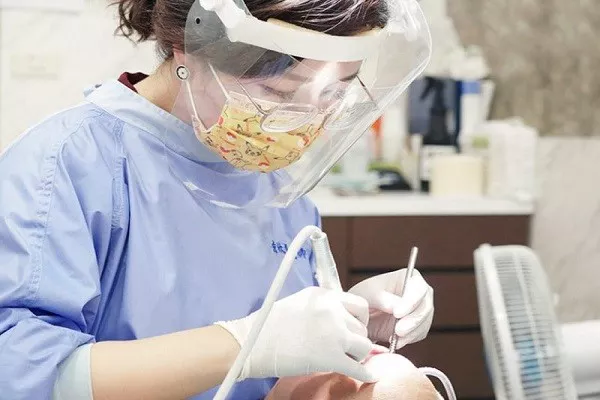Periodontal gum disease is a common oral health condition that affects the gums and supporting structures of the teeth. In this article, we delve into the question of whether there is a cure for periodontal gum disease. We will explore various treatment options and shed light on how they can effectively manage the disease. While complete cure may not be possible, timely intervention and proper management can help control the condition and prevent further damage. Let’s examine this topic in detail.
I. Understanding Periodontal Gum Disease
A. Definition and Causes
- Periodontal gum disease, also known as periodontitis, is an inflammatory condition that affects the gums and surrounding tissues.
- It is primarily caused by the accumulation of plaque, a sticky bacterial film that forms on teeth.
B. Progression and Complications
- Periodontal gum disease progresses in stages, starting with gingivitis and advancing to periodontitis.
- If left untreated, it can lead to severe complications such as tooth loss, bone deterioration, and systemic health problems.
II. Treatment Options for Periodontal Gum Disease
A. Professional Dental Cleaning
- Scaling: Removal of plaque and tartar from above and below the gum line.
- Root planing: Smoothing the tooth roots to prevent bacterial attachment and promote gum reattachment.
- Professional cleaning helps control infection and inflammation and is the first step in managing periodontal gum disease.
B. Non-surgical Treatments
- Antibiotics: Prescription of oral or topical antibiotics to eliminate bacterial infection.
- Antiseptic mouth rinses: Use of antimicrobial mouthwashes to reduce bacterial activity and promote healing.
- Non-surgical treatments aim to control the disease and prevent further progression.
C. Surgical Treatments
- Flap surgery: Lifting the gums to access and clean the infected areas and repositioning the gum tissue.
- Bone grafting: Regenerating bone tissue by using grafting materials to replace damaged bone.
- Guided tissue regeneration: Placing a barrier membrane to stimulate the growth of new bone and gum tissue.
- Surgical interventions may be necessary for advanced cases to repair damage and restore gum health.
III. Managing Periodontal Gum Disease
A. Good Oral Hygiene Practices
- Regular brushing and flossing: Removing plaque and preventing its buildup.
- Proper technique: Using the right brushing and flossing techniques to effectively clean teeth and gums.
- Routine dental visits: Regular check-ups and professional cleanings to monitor the condition and address any concerns.
B. Lifestyle Changes
- Quitting smoking: Smoking worsens gum disease and reduces the effectiveness of treatments.
- Healthy diet: Consuming a balanced diet rich in nutrients to support gum health and overall well-being.
- Stress management: Reducing stress levels, as stress can contribute to the progression of gum disease.
C. Ongoing Maintenance
- Periodontal maintenance visits: Regular follow-up visits to monitor the condition and prevent relapse.
- Professional cleanings: Removal of plaque and tartar to maintain gum health.
- Oral health education: Learning proper oral hygiene techniques and receiving guidance on maintaining a healthy mouth.
IV. The Importance of Early Detection and Treatment
A. Timely intervention: Early diagnosis and treatment can prevent the progression of gum disease.
B. Halting further damage: Managing the disease helps preserve gum and bone structure.
C. Long-term oral health: Proper management of periodontal gum disease reduces the risk of tooth loss and other complications.
V. The Possibility of a Cure
A. Complete eradication: While a complete cure for periodontal gum disease may not be possible, it can be effectively managed and controlled.
B. Maintenance and prevention: Regular maintenance and adherence to oral hygiene practices can help keep the disease in check.
C. Achieving stability: Treatment aims to achieve stability by controlling infection, reducing inflammation, and preserving gum and bone health.
VI. The Role of Patient Compliance
A. Active participation: Patients play a crucial role in managing periodontal gum disease.
B. Consistent oral hygiene: Adhering to a diligent oral care routine, including brushing, flossing, and using recommended oral products.
C. Regular dental visits: Scheduling routine check-ups and periodontal maintenance appointments for professional monitoring and cleaning.
Conclusion:
While a complete cure for periodontal gum disease may not be attainable, effective treatment options are available to manage the condition and prevent further damage. Through professional dental cleanings, non-surgical and surgical interventions, and consistent oral hygiene practices, individuals can control the disease, preserve gum and bone health, and maintain long-term oral well-being.
Early detection, timely intervention, and patient compliance are key factors in successfully managing periodontal gum disease. Regular dental visits, lifestyle changes, and ongoing maintenance play vital roles in controlling the disease’s progression and achieving stability.
Remember, consulting with a dental professional is essential for accurate diagnosis and personalized treatment plans. By working together with your dental team and committing to proactive oral care, you can effectively manage periodontal gum disease and enjoy a healthier, more vibrant smile for years to come.
Related Topics:





























